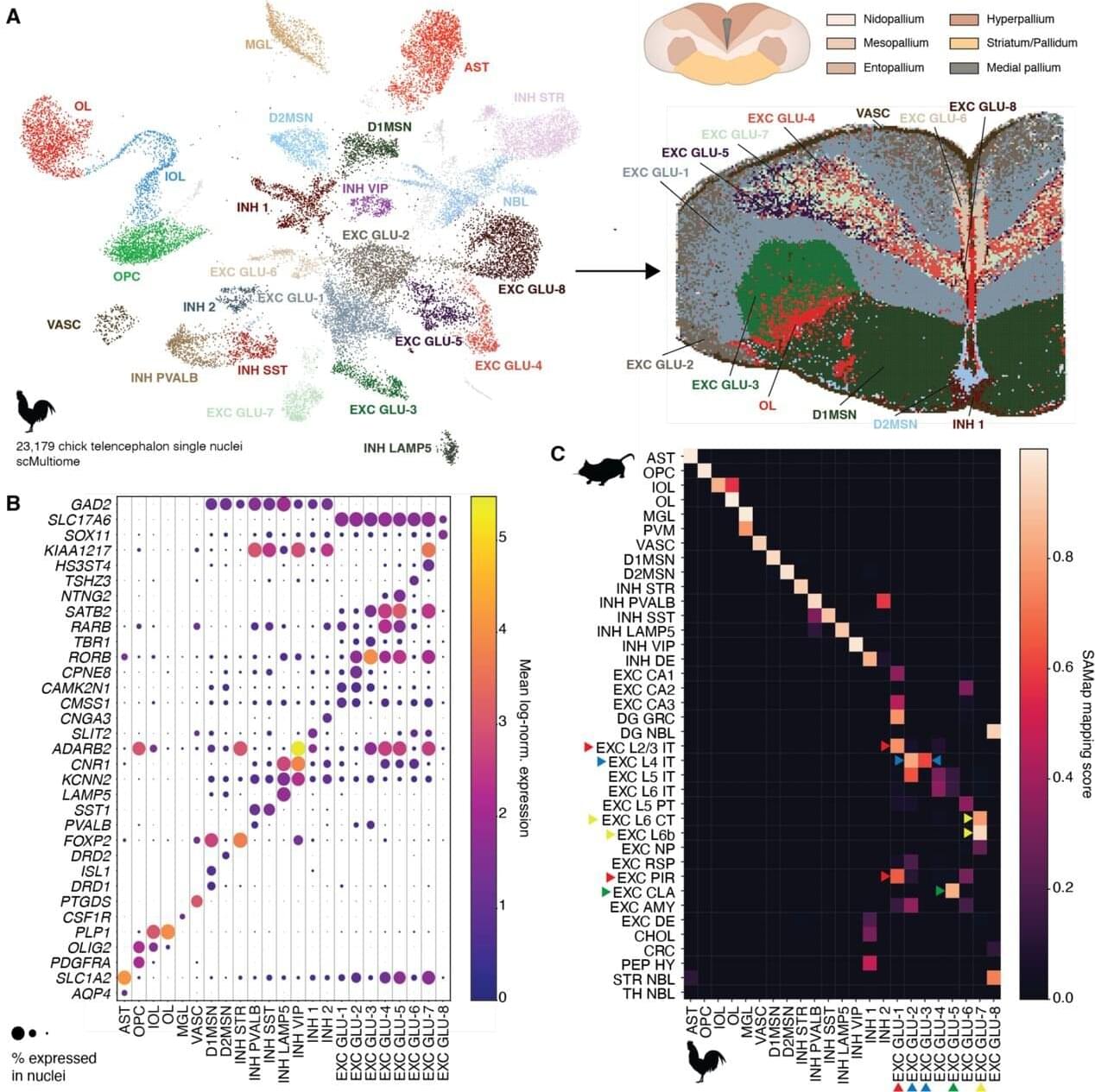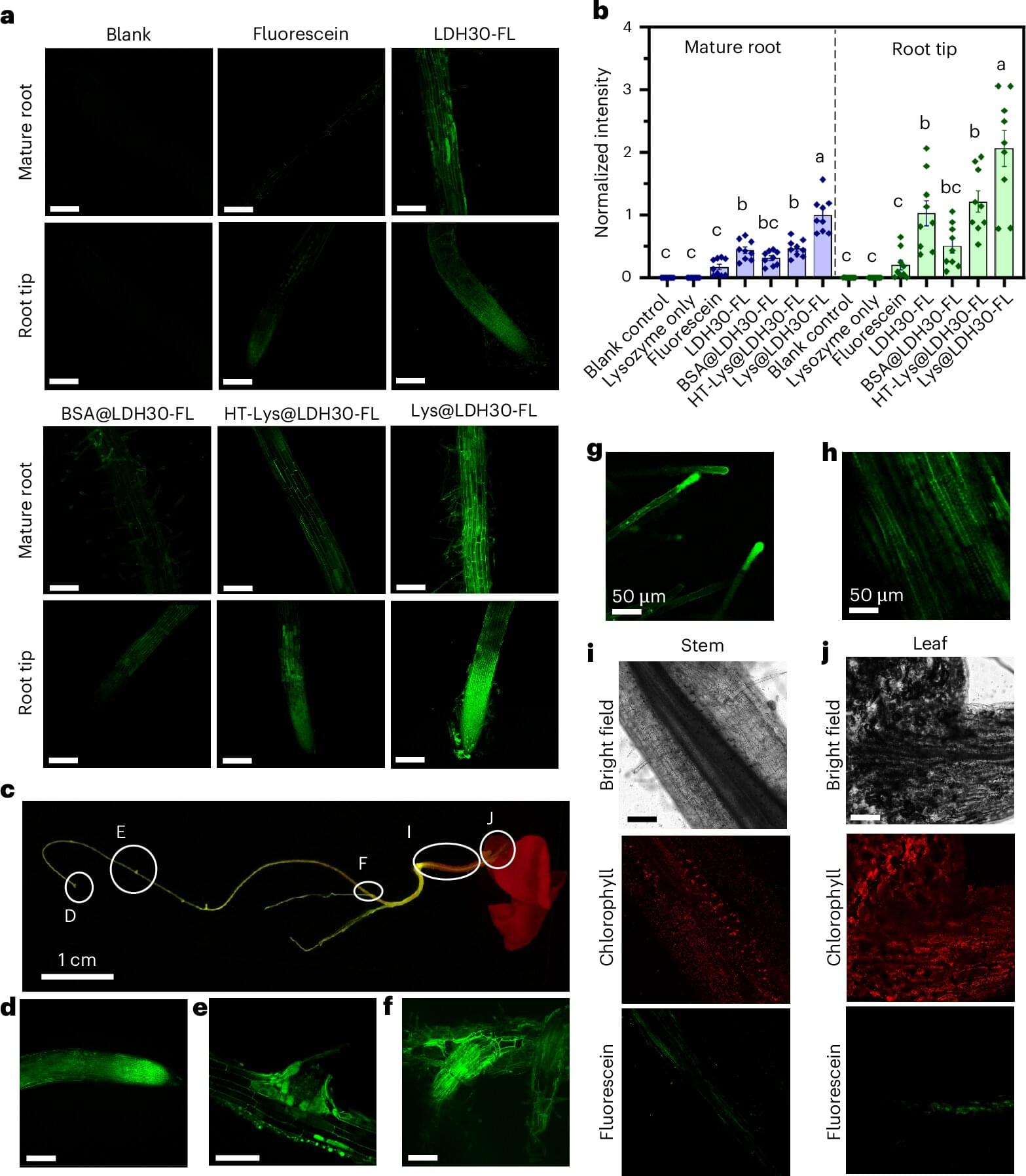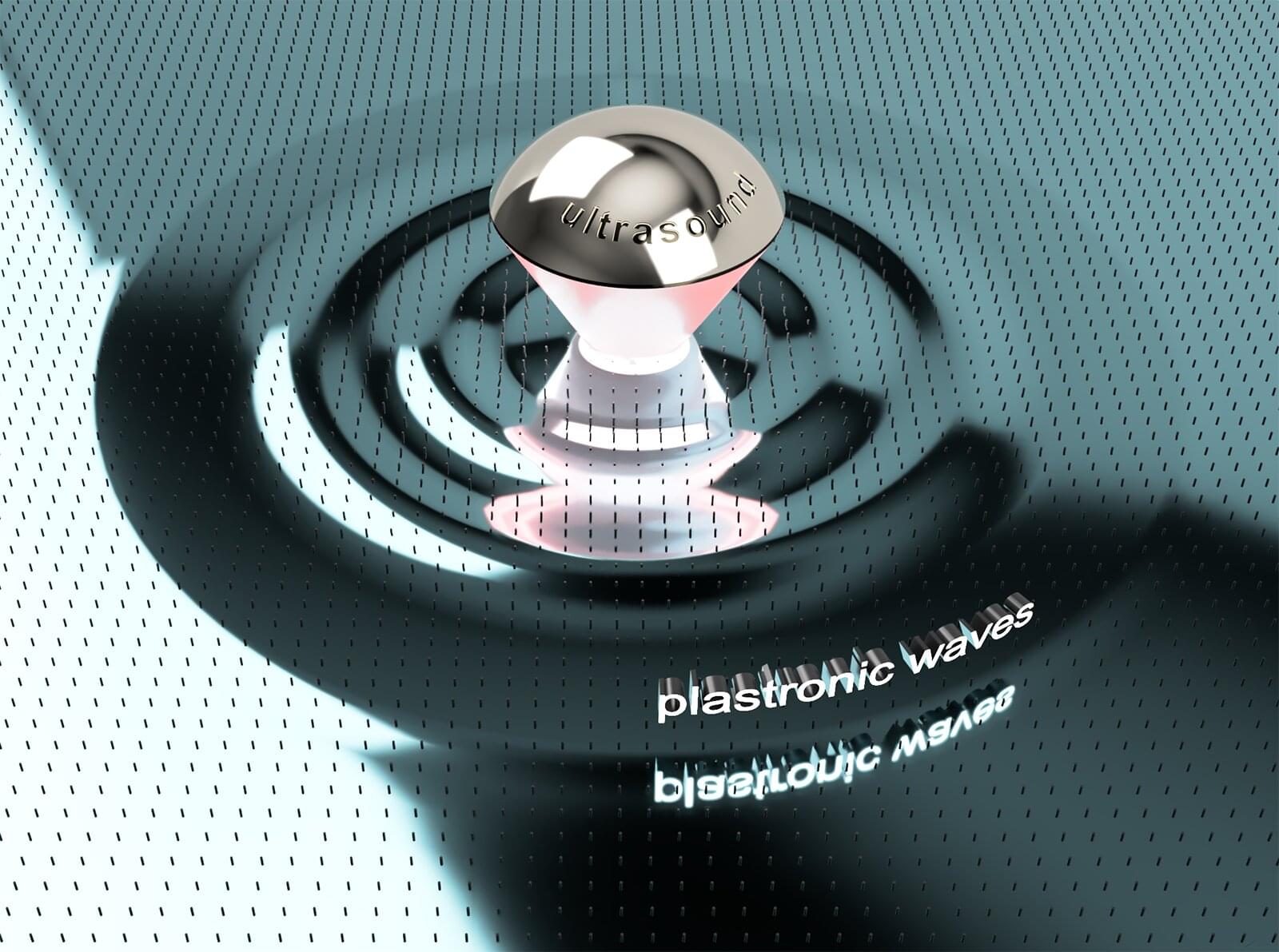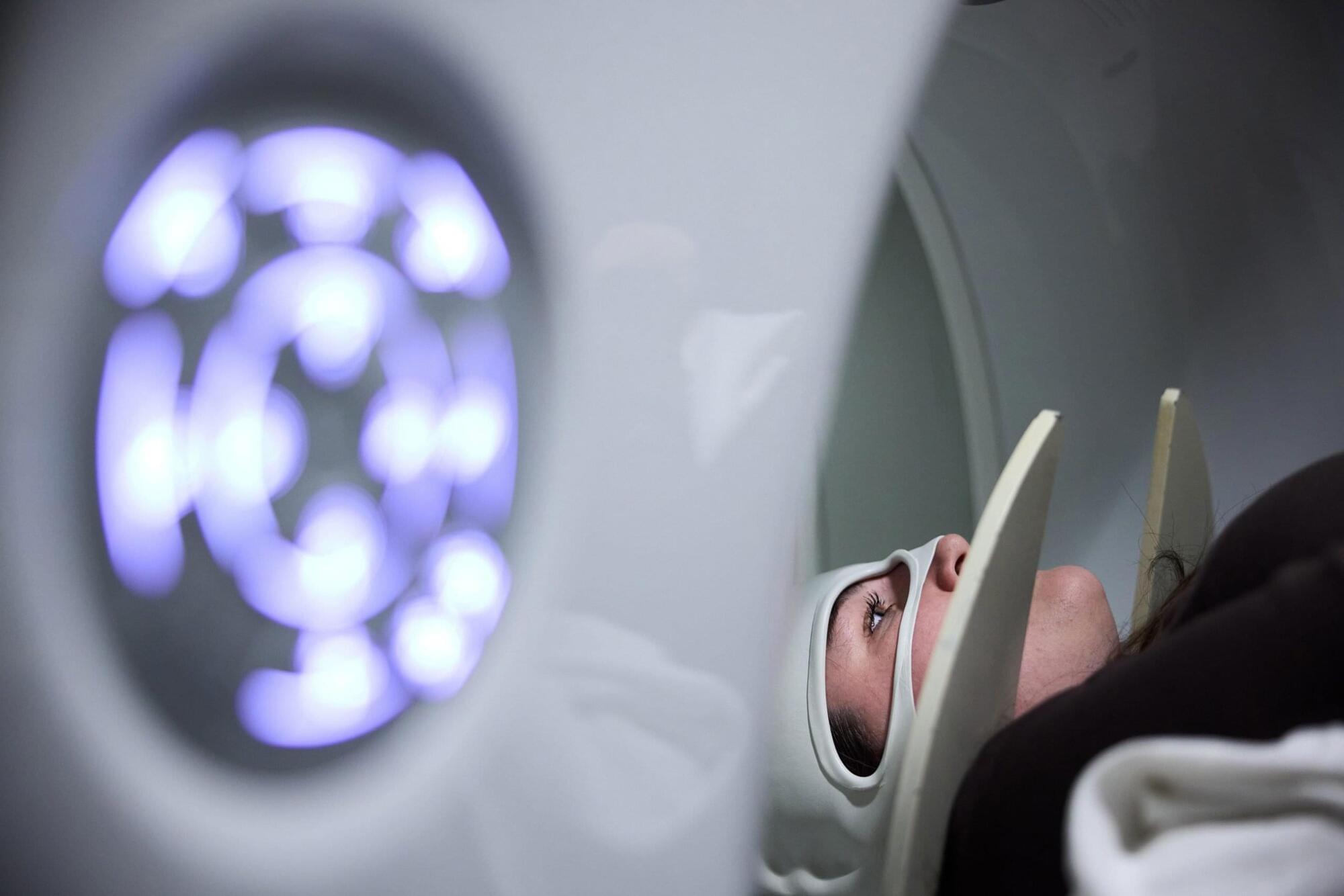Using in vitro models to study human brain evolution and diseaseCSAR lecture by Dr. Madeline Lancaster, MRC Laboratory of Molecular BiologyThe human brain is…
Category: biotech/medical – Page 263



Deep learning provides new view on 300 million years of brain evolution
In a new study published in Science, a Belgian research team explores how genetic switches controlling gene activity define brain cell types across species. They trained deep learning models on human, mouse, and chicken brain data and found that while some cell types are highly conserved between birds and mammals after millions of years of evolution, others have evolved differently.
The findings not only shed new light on brain evolution; they also provide powerful tools for studying how gene regulation shapes different cell types, across species or different disease states.
Our brain, and by extension our entire body, is made up of many different types of cells. While they share the same DNA, all these cell types have their own shape and function. What makes each cell type different is a complex puzzle that researchers have been trying to put together for decades from short DNA sequences that act like switches, controlling which genes are turned on or off.

Nanoparticles successfully deliver genetic material to plants via roots
University of Queensland researchers have for the first time introduced genetic material into plants via their roots, opening a potential pathway for rapid crop improvement. The research is published in Nature Plants.
Professor Bernard Carroll from UQ’s School of Chemistry and Molecular Biosciences said nanoparticle technology could help fine-tune plant genes to increase crop yield and improve food quality.
“Traditional plant breeding and genetic modification take many generations to produce a new crop variety, which is time-consuming and expensive,” Professor Carroll said.

Active matter: Scientists create three-dimensional ‘synthetic worms’
Researchers at the University of Bristol have made a breakthrough in the development of “life-like” synthetic materials which are able to move by themselves like worms.
Scientists have been investigating a new class of materials called “active matter,” which could be used for various applications from drug delivery to self-healing materials.
Compared to inanimate matter—the sort of motionless materials we come across in our lives every day, such as plastic and wood—active matter can show fascinating life-like behavior.

Generating record-speed waves on extremely water-repellent surfaces
Ripples, like ones produced by raindrops falling in a puddle, are also called capillary waves. Studied since antiquity, they have garnered considerable interest in modern science due to their ability to reveal information about the medium on which they travel. This makes them particularly valuable for studying soft and biological matter in microfluidic applications, which focus on how fluids behave in microscopic environments.
Now physicists and biomedical researchers from Aalto University’s Department of Neuroscience and Biomedical Engineering and Department of Applied Physics have unearthed new characteristics of capillary waves, setting a record for their speed while doing so.
The paper is published in Nature Communications.

Lost for Words? Scientists Decode the Brain’s Hidden Speech Signals
The first step in this process is determining where in the brain the BCI should record from to decode someone’s intended speech.
Currently, BCI devices are only used on individuals with paralysis from ALS or stroke in the brainstem, which leaves them unable to move or communicate. In these patients, BCIs record signals from the frontal lobe. But Broca’s aphasia, which most often affects people after a stroke or brain tumor, results from damage to the frontal lobe of the brain, where speech production and parts of language are processed. So, to help patients with Broca’s aphasia, scientists would likely need to record signals from other areas of the brain.

Yale Scientists Reprogram Genetic Code To Create Revolutionary Synthetic Organism
Synthetic biologists from Yale successfully rewrote the genetic code of an organism—a novel genomically recoded organism (GRO) with a single stop codon—using a cellular platform they developed that enables the production of new classes of synthetic proteins. Researchers say these synthetic proteins offer the promise of innumerable medical and industrial applications that can benefit society and human health.
A new study published in the journal Nature describes the creation of the landmark GRO, known as “Ochre,” which fully compresses redundant (or “degenerate”) codons into a single codon. A codon is a sequence of three nucleotides in DNA
DNA, or deoxyribonucleic acid, is a molecule composed of two long strands of nucleotides that coil around each other to form a double helix. It is the hereditary material in humans and almost all other organisms that carries genetic instructions for development, functioning, growth, and reproduction. Nearly every cell in a person’s body has the same DNA. Most DNA is located in the cell nucleus (where it is called nuclear DNA), but a small amount of DNA can also be found in the mitochondria (where it is called mitochondrial DNA or mtDNA).

Stopping Alzheimer’s Before It Starts: Landmark Trial Enrolls First Participants
Researchers at Washington University School of Medicine in St. Louis have enrolled the first participants in an international clinical trial designed to prevent Alzheimer’s.
Alzheimer’s disease is a progressive neurological disorder that primarily affects older adults, leading to memory loss, cognitive decline, and behavioral changes. It is the most common cause of dementia. The disease is characterized by the buildup of amyloid plaques and tau tangles in the brain, which disrupt cell function and communication. There is currently no cure, and treatments focus on managing symptoms and improving quality of life.